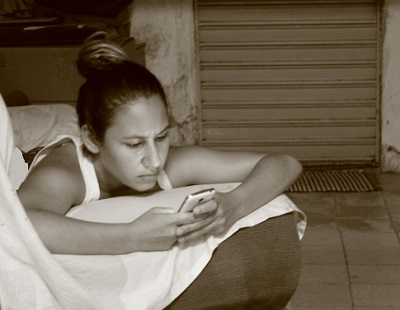The company is working to be able to use smartphone ads, but progress has been slow so far.
AOL has made it more than clear that mobile marketing is a goal for their future, particularly through the acquisition of Millennial Media, which also helped to reveal precisely who their ads will be targeting.
That said, the millennial generation is one that is being broadly targeted, so this could be a bumpy road.
eMarketer has recently stated that “According to eMarketer’s latest U.S. ad spending forecast, catching rivals Google and Facebook could prove challenging.” The company went on to explain that “Google commands 32.9 percent of mobile ad revenue in the U.S., or nearly $10.02 billion. Facebook captures 19.4 percent, or nearly $5.9 billion,” and pointed out that only about 0.3 percent (about $101.2 million) of that mobile marketing ad revenue is captured by Millennial Media.
The fact is that mobile marketing has broadened to the level that it is now highly challenging to carve out a portion.
 In order to actually become a major player in the industry, it would take a great deal of strategy and a massive amount of investment. Companies that want to be able to offer something to mobile advertisers need to be able to provide them with a tremendous scale, a huge audience targeting ability, and precise measurement tools with some considerable sophistication. This was pointed out by Cathy Boyle, an analyst at eMarketer.
In order to actually become a major player in the industry, it would take a great deal of strategy and a massive amount of investment. Companies that want to be able to offer something to mobile advertisers need to be able to provide them with a tremendous scale, a huge audience targeting ability, and precise measurement tools with some considerable sophistication. This was pointed out by Cathy Boyle, an analyst at eMarketer.
According to Boyle, “AOL will gain ground in two of those areas through its purchase of Millennial Media.” She also said that by acquiring that company, AOL will be able to enjoy a notable expansion of the depth of the ad and in-app display inventory that it can provide to advertiser clients. This will help them to be able to boost their scale in a meaningful way. Furthermore, she also underscored the fact that publishers will have the chance to obtain Millennial Media’s sizeable user profile data, which will assist in improving the ability at AOL to locate specific target audiences through using mobile technology.
Still, what cannot be forgotten is that they are not the only player in mobile marketing at this level, and that the competition from other leaders – in fact, the competition from Google, alone – remains tremendous.
Brandtone, a company from Ireland, has now partnered up with the corporation in south-east Asia.
Mobile Marketing business, Brandtone, has now revealed that it has agreed to work with Unilever in order to assist that company in being able to engage with millions of people residing in south-east Asia.
These two businesses have already worked together and have been successful in their partnership.
They have already managed to run online, offline, and mobile marketing campaigns for the Sunlight and Magnum brands owned by Unilever. The most recent deal will have the Irish firm working to bring the consumer product giant’s customers in south-east Asia to a position in which they will interact with each other. To start, it will ensure that these shoppers are – at the very least – accessible to the brand. Among the countries of focus will be Vietnam, Thailand, and the Philippines.
Brandtone has been responsible for other mobile marketing campaigns for massive companies.
 Among the best known names that Brandtone has managed in terms of online, offline and mobile advertising include Heineken, Pepsi, Mondelēz (previously the Kraft snacks division), and Kellogg’s. They have worked to bring those brands into the developing world through mobile technology based interactions.
Among the best known names that Brandtone has managed in terms of online, offline and mobile advertising include Heineken, Pepsi, Mondelēz (previously the Kraft snacks division), and Kellogg’s. They have worked to bring those brands into the developing world through mobile technology based interactions.
In south-east Asia, the smartphone penetration rate is as tiny as 20 percent in certain regions. Therefore, Brandtone uses SMS rewards programs in order to provide consumers with incentives. In return for those benefits, customers provide the company with some information about themselves that will then be used in order to create marketing campaigns that are better designed to be relevant to the specific needs and wants of those people.
According to the Brandtone chief executive, Donald Fitzmaurice, “When we announced our expansion into Indonesia almost a year ago, even we could not have predicted the scale of demand from brands for mobile-first data-led marketing strategies, nor how receptive consumers themselves would be.”
He explained that this part of the world has reached a mobile marketing tipping point and that he felt that this was the ideal time for Brandtone’s clients to be able to use the “power of mobile and big data” in order to reach those consumers in a highly effective way.
 In order to actually become a major player in the industry, it would take a great deal of strategy and a massive amount of investment. Companies that want to be able to offer something to mobile advertisers need to be able to provide them with a tremendous scale, a huge audience targeting ability, and precise measurement tools with some considerable sophistication. This was pointed out by Cathy Boyle, an analyst at eMarketer.
In order to actually become a major player in the industry, it would take a great deal of strategy and a massive amount of investment. Companies that want to be able to offer something to mobile advertisers need to be able to provide them with a tremendous scale, a huge audience targeting ability, and precise measurement tools with some considerable sophistication. This was pointed out by Cathy Boyle, an analyst at eMarketer.
 Among the best known names that Brandtone has managed in terms of online, offline and
Among the best known names that Brandtone has managed in terms of online, offline and 